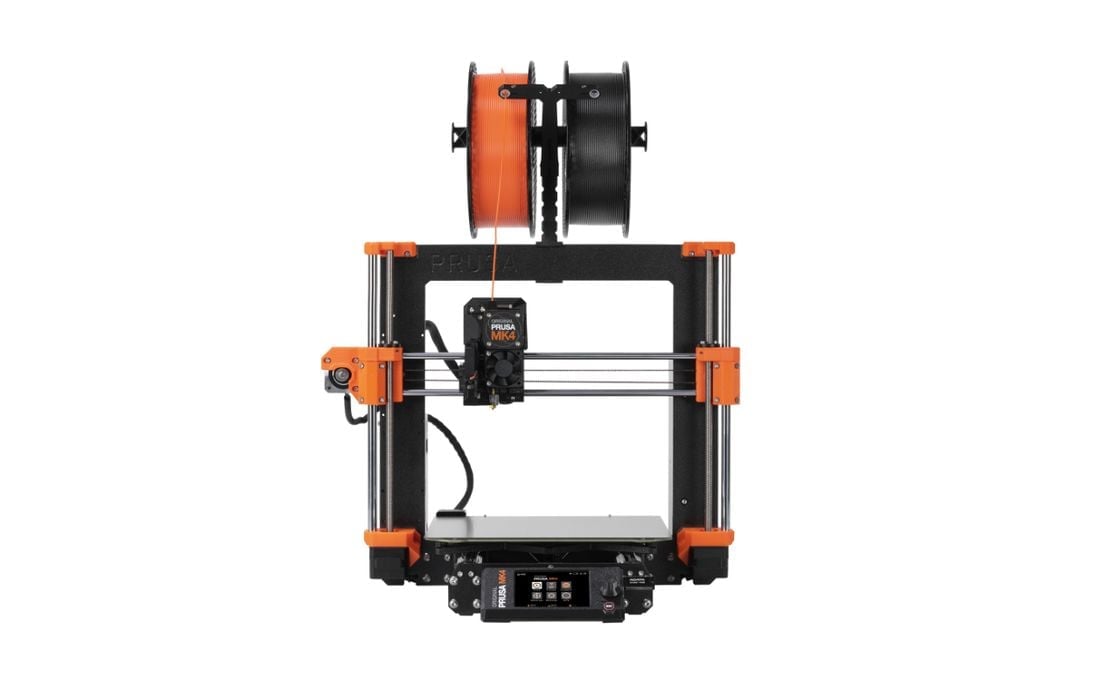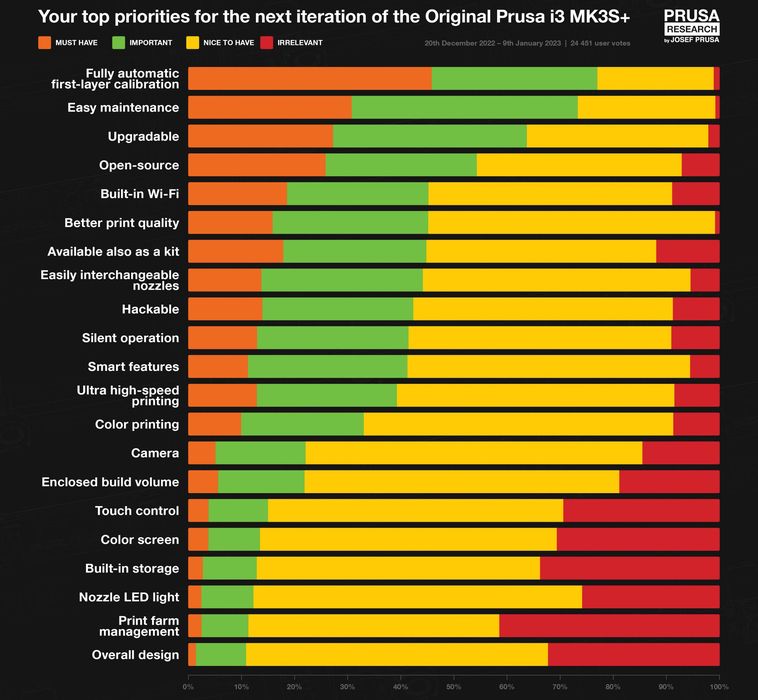
After yesterday’s blockbuster announcement of the long-awaited Original Prusa MK4 3D printer, I have some thoughts.
After writing on the announcement and machine itself, I pondered what all this meant for Prusa Research and the 3D print community as a whole.
To be clear, the MK4 seems to be quite an amazing device. It has a number of highly desirable features that should make life with the machine far easier than previous models. Most notable is the new automated calibration system that should provide for perfect first layer adhesion every time.
Prusa Research focused on survey results to help determine the features of the MK4, and the first layer issue rose to the top, as you can see in their survey results here:

They also hit many of the other desired features in the new MK4 design, and the result is a pretty advanced desktop 3D printer. Of particular interest is the MK4’s ability to print at higher speeds. This is exceptional design work work done by the Prusa techs.
But there’s one looming issue: the machine’s price. The device is priced at US$799 for a kit, and US$1099 for an assembled version, like the MK3S+. This price point is vastly higher than many comparable Asian machines on the market these days, which are around US$350, plus or minus US$100. In other words, the MK4 is still 2-3X the price of competing machines.
The Prusa MK4 is definitely a better machine, not only due to the added features, but also their excellent worldwide support, integration with Printables and ease of maintenance.
The big question, however, is whether buyers will consider paying an “extra” US$300-850 for those features and benefits. That extra cost could literally buy a second competing machine, and that would double print throughput and dramatically reduce risk of machine unavailability. I am already seeing comments on social media from people questioning the price of the MK4 versus that of competing machines.
The competition for Prusa Research in the desktop market is considerable. Not only are low-cost machines nearing similar quality levels, but there are an increasing number of machines emerging that are high speed. Perhaps the most notable in this category is the Bambu Lab P1P, which is priced at only US$899 (Assembled).
Facing competing machines that are of similar quality, print faster and cost less, one can easily understand why Prusa Research was compelled to introduce the MK4: the MK3S+ would very soon be unable to compete in the market, and likely already saw a dent in demand due to competition. They had to release something.
After reading the lengthy blog post by Prusa Research CEO Josef Prusa, it is clear that the company spent quite some time designing, building and testing the MK4 system. In other words, I think they foresaw this wave of competition coming some time ago and acted appropriately.
Does this position Prusa Research ahead of the competition? While the MK4 definitely has some features more advanced than the competition, we are very likely to see other products catch up quickly. It may be that the new lead established by the MK4 could dissipate quickly.
Then there’s also the question of feature value. It’s possible to keep adding features to make a machine better, but at some point the typical operator won’t benefit as much from them. At that point the extra cost for the features could push buyers towards alternatives.
Prusa Research is in a fierce battle with competitors and the MK4 is their latest step. Meanwhile, the company has hedged their bets by developing a professional machine, the XL, a manufacturing print farm solution, and acquired Trilab, which makes industrial 3D printers — just in case.
Via Prusa Research

P1p is 699 assembled.